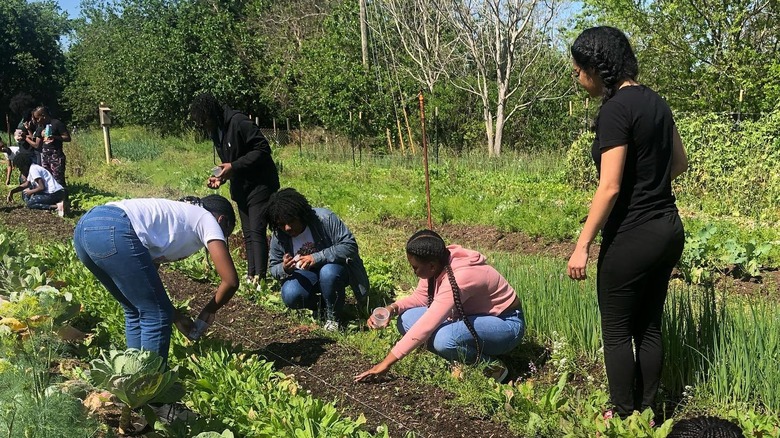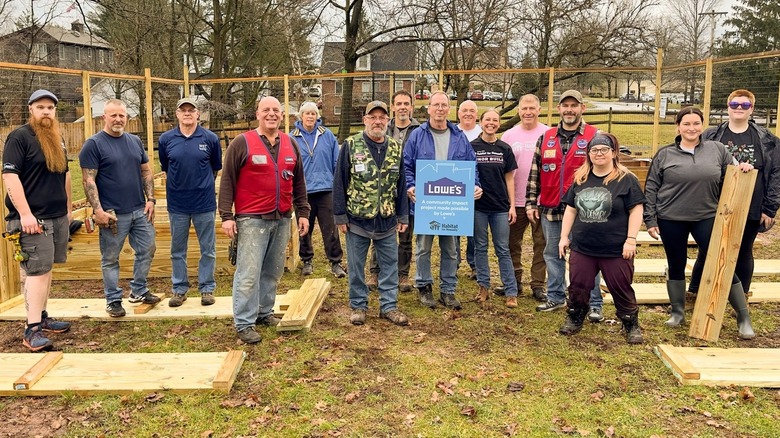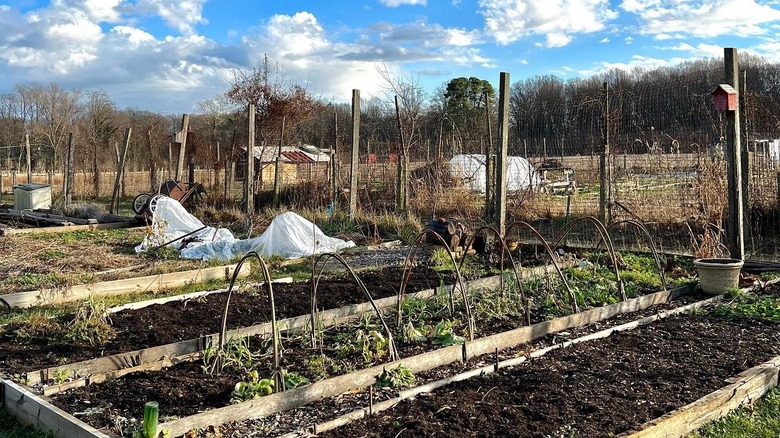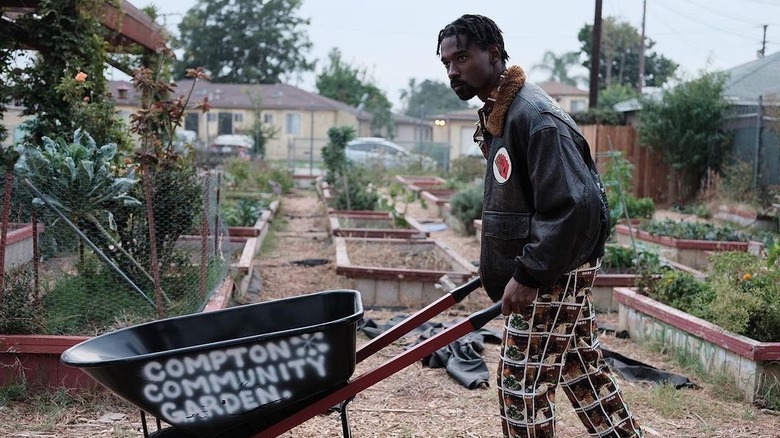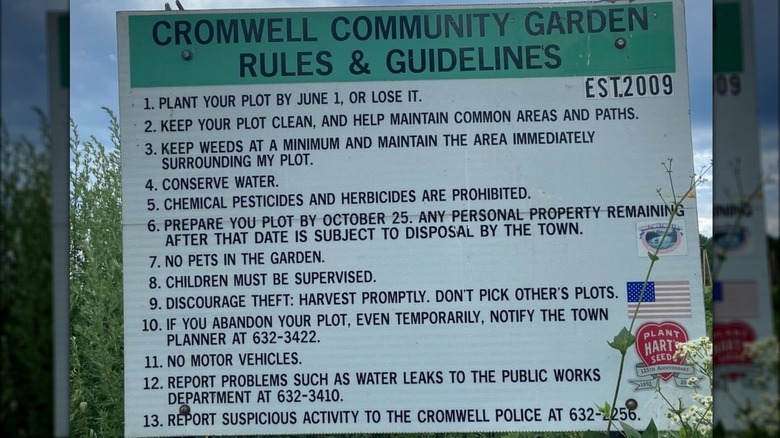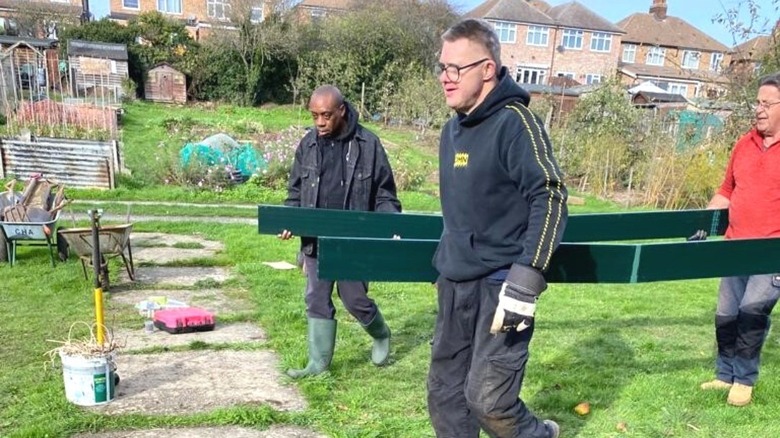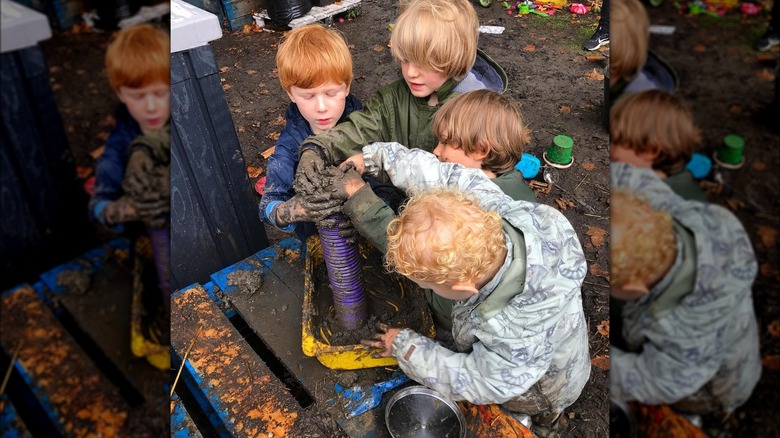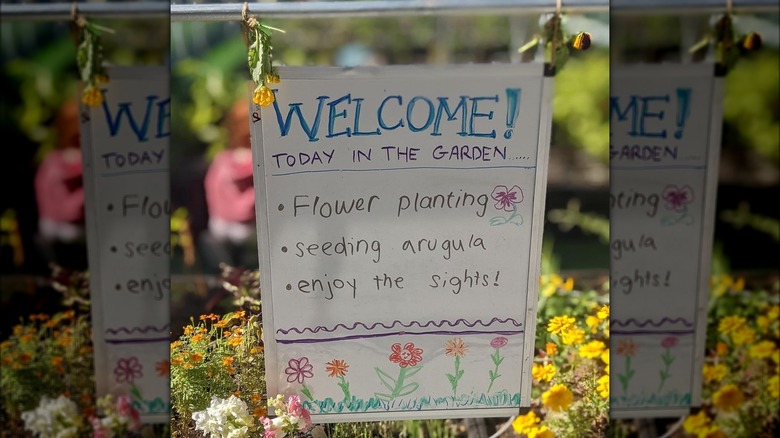Ten Easy Steps For Starting A Community Garden
Community gardens offer people a place to connect to the outdoors and provide neighborhoods with an efficient way to grow fresh produce, explains Greenleaf Communities. They are also a great way to subsidize food costs in areas with low income. According to Garden Pals, every dollar sowed into a community garden generates around $6 of edible fruits and vegetables, with just 10 sq. ft. of land generating over 18 servings of food.
While you may be concerned that you don't know enough about gardening or growing food, with the right conditions, a little know-how, and the support of your friends and neighbors you will be surprised at how much can be accomplished. Moreover, a community garden can be much more than just a place to grow food. According to Science Direct, community gardens boast several therapeutic benefits, including relief from physical and mental stress. Bring a community garden to your neighborhood with these simple steps.
Gather a planning committee of passionate citizens
You don't need to raise an army in order to start a community garden. A dedicated group of individuals — just three to five people — can wrangle together the know-how, network, and funds to launch a garden, explains Urban Harvest.
Having a horticulturist on board is advisable, but certainly not mandatory. A variety of professionals, including carpenters, landscapers, florists, mechanics, and lawyers, can bring their unique expertise to this group endeavor (via See What Grows). Plus, newbies can learn the ropes (and the gardening hacks) from folks with greener thumbs.
Reach out to the community
The American Community Gardening Association says it's crucial to include members of the community during all parts of the planning process. You may also want to consider involving local community leaders, governmental agencies, and the local health department (via Nobel Research Institute). These relationships can help ease the bureaucratic frustration that many projects face.
This is also a great time to reach out to a local sponsor. In exchange for signage in the garden, businesses like landscaping firms or fencing companies might be willing to donate labor and materials.
Select your site
Public land, like parks and schools, suits community gardens because it offers assurance that the community will be able to access the garden for years to come. But private spaces like houses of worship and housing developments can also make excellent locations.
While a potential site can look ideal, without testing the soil, you won't know if your garden can thrive there. Successful gardens should receive six or more hours of sun exposure every day, have ample water supply, offer proper soil drainage, and allow for easy community access.
Make it legal
Once you've chosen a suitable site, either public or private, you'll need legal permission to build a community garden on the land. The American Community Gardening Association suggests a three-year minimum lease, but more will give a bit of security to the garden.
You'll also likely need to obtain public liability insurance — in fact, it may be impossible to secure a lease without it. This type of insurance typically covers the owner of the land and the organization responsible for operating it, rather than individual gardeners who may work in the garden, explains Michigan State University.
Procure funds to build the garden
Even the most spartan garden requires funding to purchase tools, seeds, fertilizer, and other materials. While you can potentially build a small community garden for next to nothing, the average investment to begin a garden ranges from around $1,500 to $4,000. You'll need to set aside a few hundred dollars in maintenance costs each year, as well.
Gardens can raise money in a number of ways — fundraising events, grants, sponsorships, and membership dues can all help add to the coffers.
Determine what you will grow
Now comes the fun part of envisioning what your community garden will look like. Will you grow vegetables? Fruits? Herbs? Flowers? Will your garden be conventional or organic? Do you need raised beds, or is the soil at your site sufficient for growing? Which plants most benefit your community?
Consider, too, that some garden items — like shrubs and fruit trees — can take five or even ten years to produce edible fruit. Other vegetable crops can be ready in as little as 45 days.
Create community guidelines
With the planning nearing completion, it's time to explore how the garden will function on a day-to-day basis. Creating some structure — including rules, conditions, and enforcement — can help all the individuals involved work effectively together. Moreover, putting this all in writing and making the information easily accessible to participants ensures ease of operation.
This is also the point where you'll need to finalize how decisions will be made going forward. Some gardens do everything through a committee while others appoint an individual to supervise the decisions.
Bring your garden to life
Once you have secured the land and formed an operational plan, you can clean the site and begin garden development. Let your creativity go wild! Your garden can be as unique as the community it represents.
If the garden doesn't already have a fence, consider how you'll keep the fruits of your labor safe from hungry pests. Flowers or shrubs make excellent natural perimeters, but more inventive options — like branches or rocks from the surrounding region — can help define the perimeters of the garden.
Include everyone
Although vandalism is generally more of a theoretical concern than a practical one, you can create an atmosphere that deters rather than attracts potential mischief. Good lighting, especially at night, as well as thorny plants like roses and pampas grass act as natural deterrents.
Involving the entire neighborhood in the garden can help lower the risk of interference due to exclusion. This is especially true for kids. By giving children a dedicated space within the garden, they can become your garden's best guardians.
Keep communication channels open
A successful community garden not only offers residents an opportunity to connect with nature and their food, but it also serves as a social hub for the neighborhood. Beyond posting notices on a bulletin board, you could also start a newsletter or create a social media page, suggests Utopia.
Your garden can also be an excellent public space to hold meetings about issues the community is facing. In other words, the most important part of a community garden is the community. With good communication, the plants and the people all benefit.

